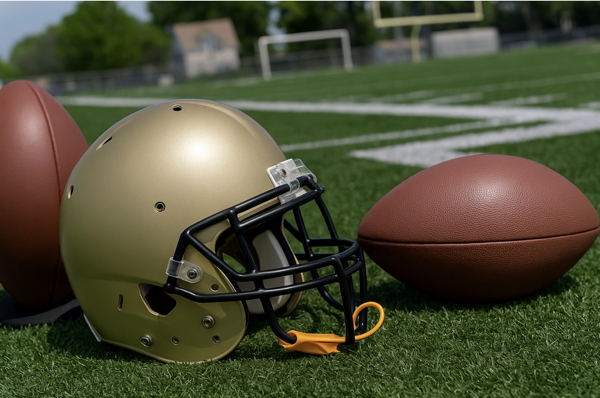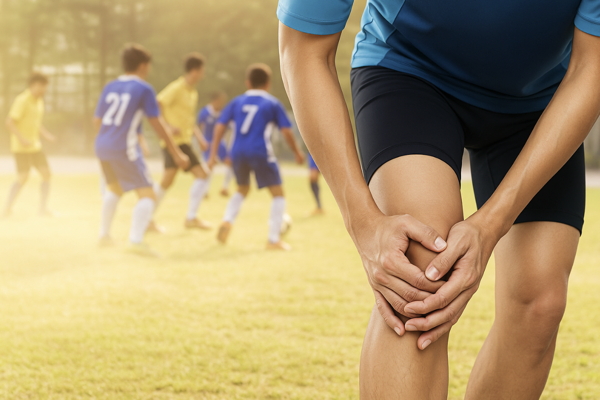 |
RacingBetter News |
| Friday 23rd May 2025 | |
How AI Is Helping Prevent Concussions
The days of dismissing concussions as merely “part of the game” are long gone. There is now a greater focus on the potential dangers of head trauma, leading to an increased risk of cognitive issues. This research is putting more pressure on sports organizations, especially on an international scale. Rising sports such as rugby, soccer, and baseball in Japan have led to a growing conversation surrounding head injuries.
According to a 2022 report by Japan's Ministry of Education, over 2,000 high school athletes experienced head trauma during sports events that year—a statistic too significant to ignore.
As medical experts warn of chronic traumatic encephalopathy (CTE) and post-concussive syndrome, leagues are turning to advanced technologies to mitigate risks. Among the most promising tools? Artificial Intelligence. AI is now playing a critical role in predicting, detecting, and even helping prevent concussions before they happen.
Machine Learning and Smart Helmets
The ways which an athlete may train or compete are gradually shifting due to innovations such as AI. For instance, the recently released smart helmets with integrated sensors that utilize machine learning. These helmets capture data in real-time, such as acceleration, impact angle, and rotational force. At the same time, the sport betting industry is paying special attention as they align with predictive modeling and health metrics of the player. AI technologies have begun to reshape the training and competition routines of athletes.
One such smart device is the VICIS Zero1, which uses AI algorithms for real-time assessment and internal adjustment of its structure to softly respond to impacts.components.Though initially designed for American football, similar tech is now being adapted for rugby and lacrosse—sports that are popular in both the U.S. and Japan. Moreover, Japan's national rugby teams have begun piloting similar headgear, integrating AI feedback into training sessions.
These smart devices don't just gather data—they interpret it. Integrating AI dashboards with trainer protocols enables real-time alerts when safety thresholds are surpassed by athletes. This proactive approach allows player removal prior to exhibiting any early symptoms, significantly reducing the chances of long-term damage.

AI in Video Analysis: A Non-Invasive Monitoring Tool
Outside of wearable technology, AI is transforming the sports industry through video analysis. Complex machine vision algorithms can now analyze several hours of footage and detect possible concussion injuries. These algorithms focus on head movement, steps, and how long it takes to recover after an impact.
An example is the Tokyo-based startup DeepSpor,t which developed an AI application that analyzes live footage during matches to spot dangerous collisions up to 20 seconds before they occur. It is currently being tested in the Japan J-League soccer and B-League basketball competitions. With AI supporting gameplay analysis, real-time decisions and predictive analytics for player health can be made more effectively over multiple timeframes.
Such an approach is paramount for athletes who participate in non-headgear sports, such as judo or boxing, where damage is not always externally evident. To illustrate, AI was employed during the Tokyo 2020 Olympics to evaluate arm movements in advance so that doctors could refine the medical prep work, complete ahead of time.
Key AI Applications in Concussion Prevention
AI in sports health tech falls under a few major categories. Each tackles concussion risks from a unique angle:
-
Impact Detection: Using helmet or mouthguard sensors to capture G-force and rotational data
-
Predictive Analytics: Forecasting risk based on play style, position, and past injuries
-
Motion Tracking: Evaluating movement patterns to detect early signs of cognitive disturbance
-
Player Monitoring: Combining biometric, gameplay, and recovery data to assess ongoing risk
These innovations have brought AI to the center of athlete safety strategies.
Summary Table: Concussion Prevention Tech Using AI
Technology Type |
Description |
Current Use Cases in Japan |
Smart Helmets |
Measure impact forces and alert thresholds |
Piloted in national rugby training camps |
Video AI Analysis |
Detects risky head movements in footage |
Used in J-League and B.League |
Biometric Wearables |
Track neurological signs post-impact |
Adopted in Olympic judo and boxing teams |
Predictive Risk Models |
Forecast high-risk athletes or games |
Early trials in high school rugby leagues |
Training Smarter, Not Just Harder
AI models are capable of analyzing thousands of data points for each athlete which makes monitoring their training programs easier. In Tokyo and Osaka, some elite sports teams go as far as utilizing AI to predict and manage the likelihood of injuries, optimizing their rest breaks, and fine-tuning performance in a way that reduces trauma exposure, maximizing gains while minimizing risk.
This strategy is also apparent during the recovery phases. Some rehab platforms are now utilizing neural network algorithms to personalize and optimize recovery timelines for concussions, helping to mitigate the risk of a premature return to play, which is common in amateur sports.
Japanese baseball academies have started integrating such models, tracking cognitive tests and motor control to gauge an athlete’s readiness. In an unexpected way, the emergence of casino game simulations is also helping to make [insert activity] safer. Athletes can now practice executing tackles or dodging maneuvers using VR and AI without the need for physical contact through gamified training. These virtual exercises help sharpen mental skills and boost reflexes as well as coordination, but they come with far fewer physical risks than real-world training.
Broader Cultural and Technological Impact
In Japan, where precision and preventative care are cultural pillars, AI’s role in concussion management aligns well with national values. The government’s emphasis on health tech innovation has led to partnerships between universities, tech startups, and sports federations.
Also, with Japan set to place bids for hosting international sporting events after 2025, integrating AI technology for athlete safety is no longer just smart—it’s critical. While there are growing worries around the issue of concussions, still, the impact of transparent tech solutions can be both substantial and meaningful.
As soon as mobile AI technologies are made available, even sidelined rural school teams will be able to compete using advanced technology, allowing them to perform on a higher level.
With the advancement of AI technology, its foresight prowess can now be employed on younger athletes to spot potential challenges early during an athlete’s training.







